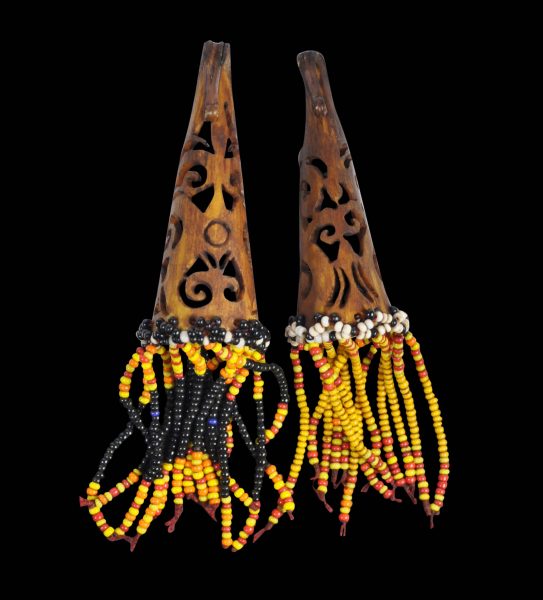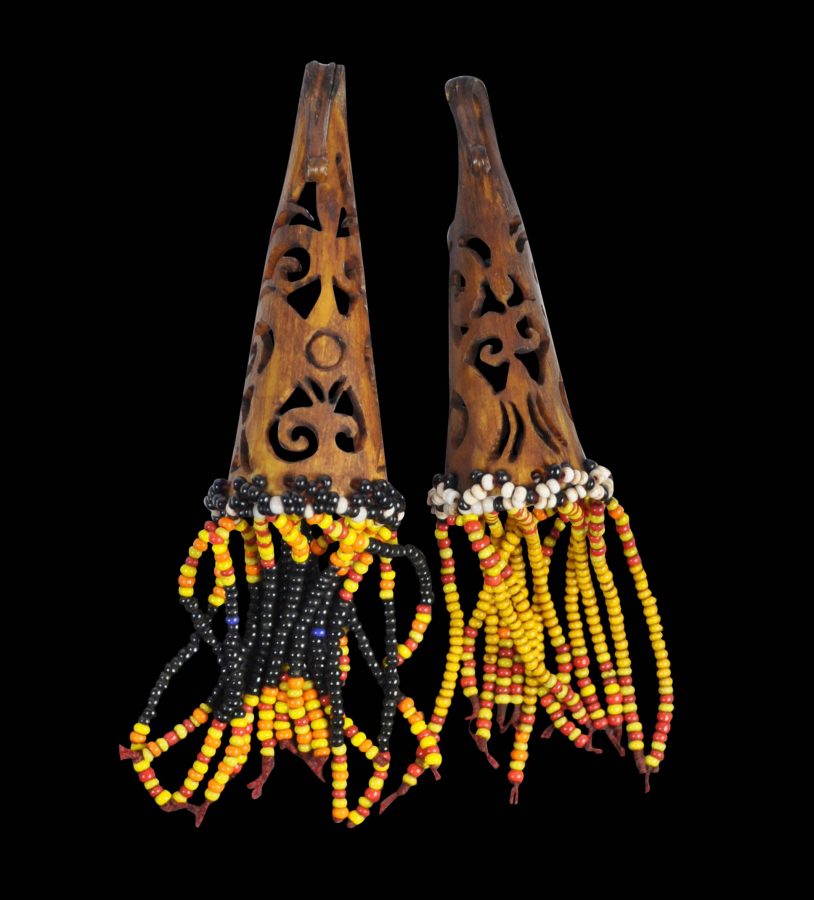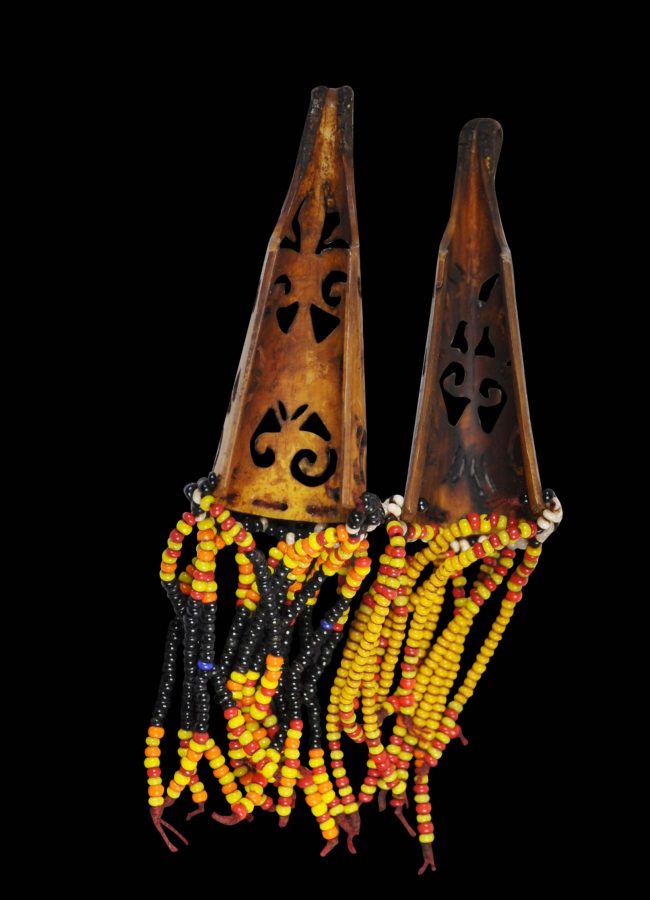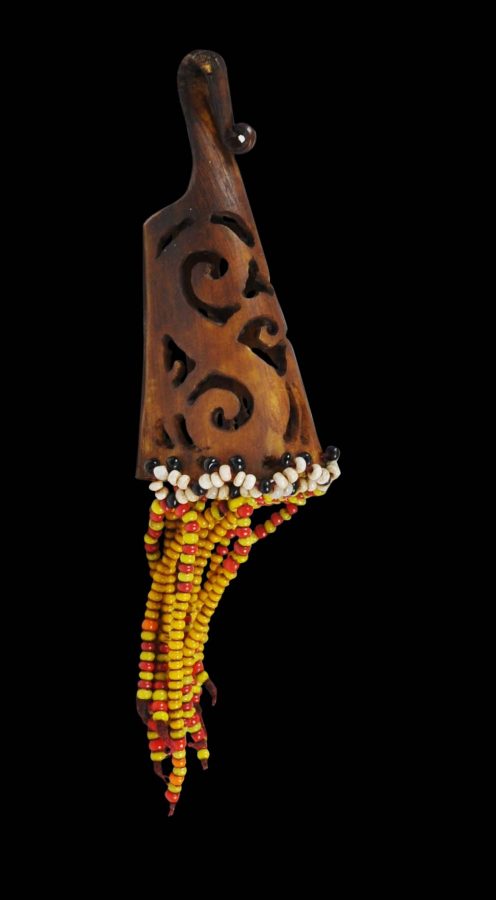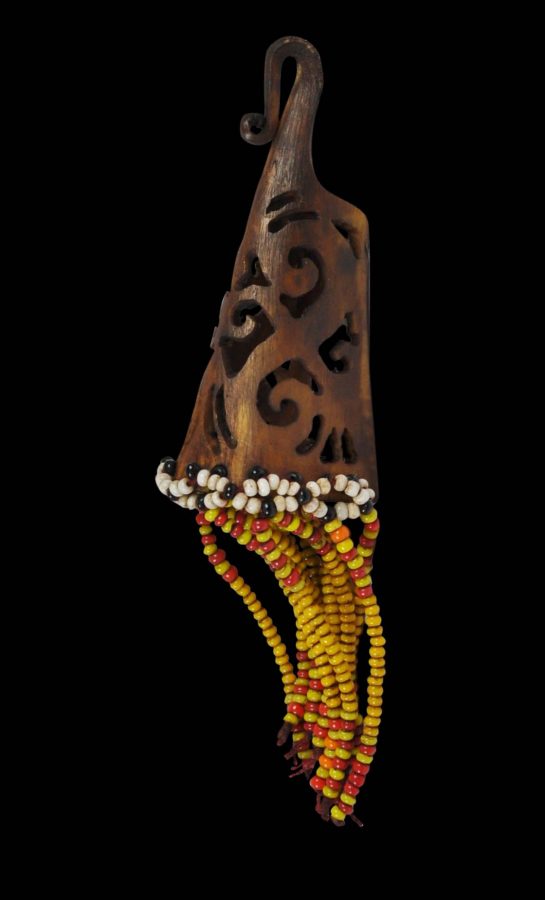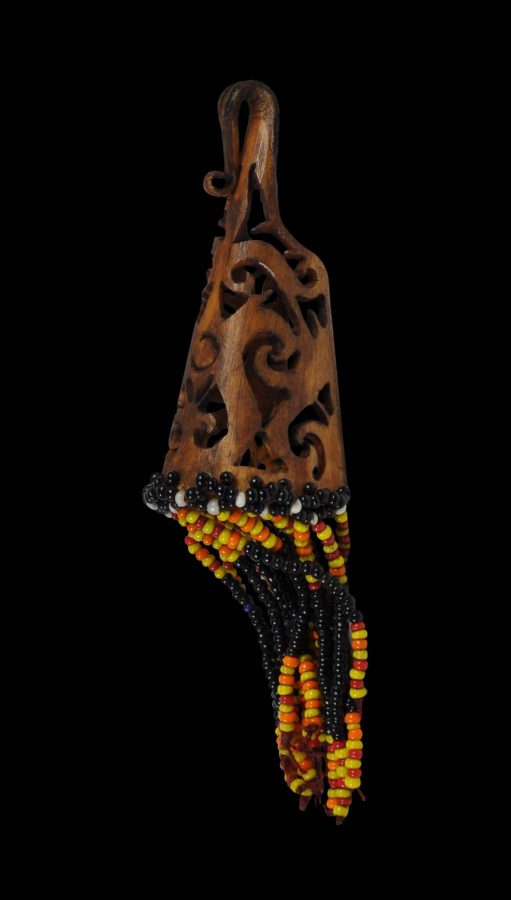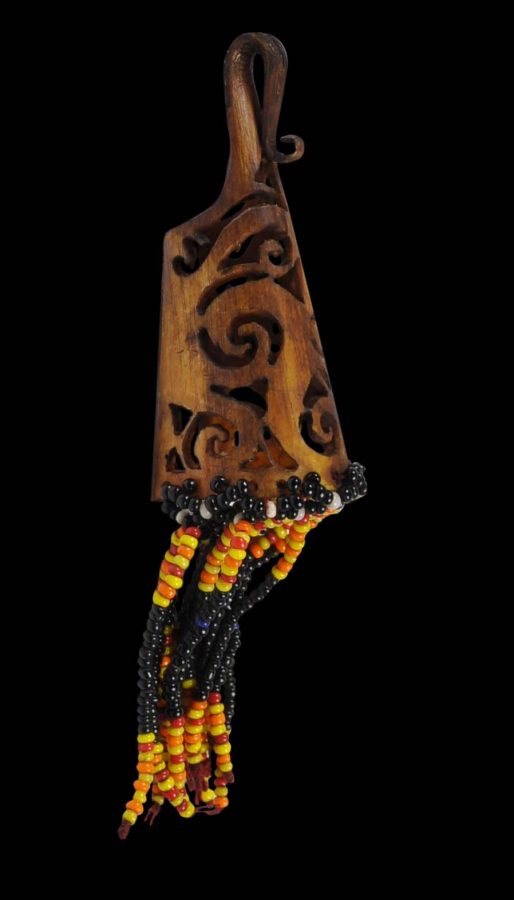These two ear ornaments, which are not quite a matched pair but were probably worn as a pair, are carved from segments of hornbill casque or ivory and further decorated with beaded tassels. They are from the Iban people of Borneo, the Iban being a Dayak subgroup.
They are carved with pierced aso-inspired scrollwork. The aso is a mythical underworld hybrid dragon-dog female fertility figure. Richter (2000, p. 174) says that such ‘curvilinear vitality’ may be derived in part from dragons or other mythical creatures portrayed in Chinese trade ceramics that were imported into Borneo in vast quantities.
The beads are in a variety of colours and are known as ‘peppercorn’ glass trade beads that have most probably come from China and India.
The hornbill (Rhinoplax vigil) is a large forest bird known for its enormous orange-red beak and casque and dark blue feathers. It was regarded with enormous symbolic importance among the Dayak of Borneo’s interior and played an important role in their creation myths. Many of Borneo’s indigenous groups traditionally viewed the hornbill as a representation of the upper-world god. The wearing of hornbill feathers and carved casques during ceremonies conveyed the high status, power and prestige of the wearer. Certainly the wearing of ornaments fashioned from hornbill tended to be restricted to men.
The casques are made of solid kerotin and are strong but also readily carved and pierced. According to Brinkgreve & Stuart-Fox (2013, p. 232) among the Kenyah Dayaks of the Apo Kayan region of Borneo, only successful headhunters were allowed to wear ear ornaments made from hornbill ivory.
The two ear ornaments here are in excellent condition. Few, if any similar examples, have been published.
References
Brinkgreve, F., & D.J. Stuart-Fox (eds), Living with Indonesian Art: The Frits Liefkes Collection, Rijksmuseum Volkenkunde, 2013.
Munan, H., Beads of Borneo, Editions Didier Millet, 2005.


